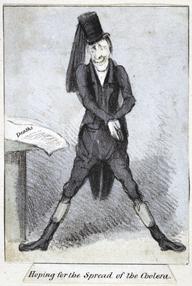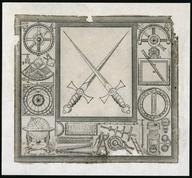

One of six sketches in crayon by James Nasmyth
- artist:
- James Hall Nasmyth








One of six sketches in crayon by James Nasmyth showing the crater, Gassendi and other smaller features on the front and reverse sides.
Nasmyth observed the Moon nightly, making carefully annotated sketches of specific features, such as these craters. As the Moon orbited the earth, different angles allowed him to judge the height of lunar mountains and depth of the craters. Working with plaster, he then modelled detailed sections of the surface in three dimensions, and photographed these under strong sunlight. He published the resulting images in a seminal work 'The Moon' with James Carpenter, 1874.




